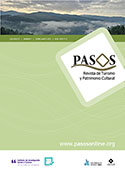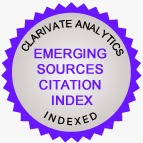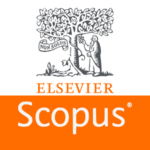Explorar a intenção dos turistas de utilizar aplicações de turismo inteligentes
DOI:
https://doi.org/10.25145/j.pasos.2025.23.006Palavras-chave:
Aplicações, Turismo inteligente, Marketing de destinos, Intenção de utilizarResumo
Este estudo investiga a intenção dos turistas de utilizar aplicações durante as suas viagens e os factores que influenciam essa intenção. Embora vários estudos tenham abordado a adoção de diferentes tecnologias, o comportamento dos turistas com o conjunto de tecnologias com funcionalidades de smart destination tem sido pouco estudado. Neste sentido, foi testado um modelo baseado no modelo teórico UTAUT2 para compreender as motivações para a adoção destas aplicações. Foi realizado um inquérito online com 107 respostas. O modelo foi testado através de equações estruturais utilizando PLS. Os resultados sugerem que a expetativa de resultado, o habitus e os factores condicionantes influenciam positivamente a intenção de usar aplicações de turismo. No entanto, não se pode confirmar que a expetativa de esforço, a influência social, a motivação hedónica e a relação valor/preço afectem a intenção de utilização. São também discutidas possíveis implicações práticas para os criadores e gestores de destinos turísticos.
Downloads
##plugins.generic.pfl.publicationFactsTitle##
##plugins.generic.pfl.reviewerProfiles## Indisp.
##plugins.generic.pfl.authorStatements##
##plugins.generic.pfl.indexedIn##
-
##plugins.generic.pfl.indexedList##
- ##plugins.generic.pfl.academicSociety##
- PASOS. Revista de Turismo y Patrimonio Cultural
- ##plugins.generic.pfl.publisher##
- Instituto Universitario de Investigación Social y Turismo. Universidad de La Laguna (España) - Instituto Universitario da Maia ISMAI (Portugal)
Referências
Amaro, S., & Duarte, P. (2013). Online travel purchasing: A literature review. Journal of Travel & Tourism Marketing, 30(8), 755-785.
Assaker, G., Hallak, R., & El-Haddad, R. (2020). Consumer usage of online travel reviews: Expanding the unified theory of acceptance and use of technology 2 model. Journal of Vacation Marketing, 26(2), 149-165.
Baptista, G., & Oliveira, T. (2015). Understanding mobile banking: The unified theory of acceptance and use of technology combined with cultural moderators. Computers in Human Behavior, 50, 418-430.
Buhalis, D., & Amaranggana, A. (2014). Smart tourism destinations. In Information and Communication Technologies in Tourism 2014: Proceedings of the International Conference in Dublin, Ireland, January 21-24, 2014 (553-564). Springer International Publishing.
Buhalis, D., & Moldavska, I. (2022). Voice assistants in hospitality: using artificial intelligence for customer service. Journal of Hospitality and Tourism Technology, 13(3), 386-403.
Buhalis, D. (2020). Technology in tourism-from information communication technologies to eTourism and Smart tourism towards ambient intelligence tourism: A perspective article. Tourism Review, 75(1), 267-272.
Bulchand-Gidumal, J., William Secin, E., O’Connor, P., & Buhalis, D. (2023). Artificial intelligence’s impact on hospitality and tourism marketing: exploring key themes and addressing challenges. Current Issues in Tourism, 1-18.
Carmines, E. G., & Zeller, R. A. (1979). Reliability and validity assessment. Sage publications.
Chi, O. H., Gursoy, D., & Chi, C. G. (2020). Tourists’ attitudes toward the use of artificially intelligent (AI) devices in tourism service delivery: moderating role of service value seeking. Journal of Travel Research, 61(1), 170-185.
Chin, W. W. (1998). The partial least squares approach to structural equation modeling. Modern Methods for Business Research, 295(2), 295-336.
Chin, W. W. (2009). How to write up and report PLS analyses. In Handbook of partial least squares: Concepts, methods and applications (pp. 655-690). Berlin, Heidelberg: Springer Berlin Heidelberg.
Ciftci, O., Choi, E. K. C., & Berezina, K. (2021). Let’s face it: are customers ready for facial recognition technology at quick-service restaurants?. International Journal of Hospitality Management, 95, 102941.
Chung, N., Lee, H., Kim, J. Y., & Koo, C. (2018). The role of augmented reality for experience-influenced environments: The case of cultural heritage tourism in Korea. Journal of Travel Research, 57(5), 627-643.
Çalışkan, G., Yayla, İ., & Pamukçu, H. (2023). The use of augmented reality technologies in tourism businesses from the perspective of UTAUT2. European Journal of Innovation Management.
Diamantopoulos, A., & Siguaw, J. A. (2006). Formative versus reflective indicators in organizational measure development: A comparison and empirical illustration. British Journal of Management, 17(4), 263-282.
Dijkstra, T. K., & Henseler, J. (2015). Consistent partial least squares path modeling. MIS Quarterly, 39(2), 297-316.
do Valle, P. O., & Assaker, G. (2015). Using partial least squares structural equation modeling in tourism research: A review of past research and recommendations for future applications. Journal of Travel Research, 55(6), 695-708.
Escobar-Rodríguez, T., & Carvajal-Trujillo, E. (2014). Online purchasing tickets for low cost carriers: An application of the unified theory of acceptance and use of technology (UTAUT) model. Tourism Management, 43, 70-88.
Fornell, C., & Larcker, D. F. (1981). Evaluating structural equation models with unobservable variables and measurement error. Journal of Marketing Research, 18(1), 39-50.
Foroughi, B., Sitthisirinan, S., Iranmanesh, M., Nikbin, D., & Ghobakhloo, M. (2023). Determinants of travel apps continuance usage intention: extension of technology continuance theory. Current Issues in Tourism, 1-17.
Gavilan, D., Martínez-Navarro, G., & Fernández-Lores, S. (2017). Influencia social online: nuevas tecnologías en la comunicación del sector turístico. Revista ICONO 14. Revista Científica de Comunicación y Tecnologías Emergentes, 15(2), 138-167.
Geisser, S. (1975). The predictive sample reuse method with applications. Journal of the American Statistical Association, 70(350), 320-328.
Gupta, A., & Dogra, N. (2017). Tourist adoption of mapping apps: A UTAUT2 perspective of smart travellers. Tourism and Hospitality Management, 23(2), 145-161.
Hair, J. F., Hult, G. T. M., Ringle, C. M., Sarstedt, M., Danks, N. P., & Ray, S. (2021). Evaluation of reflective measurement models. In Partial Least Squares Structural Equation Modeling (PLS-SEM) Using R (75-90). Springer, Cham.
Hair, J. F., Ringle, C. M., & Sarstedt, M. (2011). PLS-SEM: Indeed a silver bullet. Journal of Marketing Theory and Practice, 19(2), 137–149.
Henseler, J., Hubona, G., & Ray, P. A. (2016). Using PLS path modeling in new technology research: updated guidelines. Industrial Management & Data systems, 116(1), 2-20.
Henseler, J., Ringle, C. M., & Sinkovics, R. R. (2009). The use of partial least squares path modeling in international marketing. Advances in International Marketing, 20, 277-319.
Huang, C. D., Goo, J., Nam, K., & Yoo, C. W. (2017). Smart tourism technologies in travel planning: The role of exploration and exploitation. Information & Management, 54(6), 757-770.
Jeong, M., & Shin, H. H. (2020). Tourists’ experiences with smart tourism technology at smart destinations and their behavior intentions. Journal of Travel Research, 59(8), 1464-1477.
Kenny, D. A., & Judd, C. M. (2019). The unappreciated heterogeneity of effect sizes: Implications for power, precision, planning of research, and replication. Psychological Methods, 24(5), 578.
Khayer, A., & Bao, Y. (2019). The continuance usage intention of Alipay: Integrating context-awareness and technology continuance theory (TCT). The Bottom Line, 32(3), 211-229.
Kline, R. B. (2011). Principles and practice of structural equation modeling (3. Baskı). New York, NY: Guilford, 14, 1497-1513.
Kurata, Y., & Hara, T. (2013). CT-planner4: Toward a more user-friendly interactive day-tour planner. In Information and Communication Technologies in Tourism 2014: Proceedings of the International Conference in Dublin, Ireland, January 21-24, 2014 (73-86). Springer International Publishing.
Limayem, M., Hirt, S. G., & Cheung, C. M. (2007). How habit limits the predictive power of intention: The case of information systems continuance. MIS Quarterly, 705-737.
Lin, C. P., & Anol, B. (2008). Learning online social support: an investigation of network information technology based on UTAUT. CyberPsychology & behavior, 11(3), 268-272.
Lu, L., Cai, R., & Gursoy, D. (2019). Developing and validating a service robot integration willingness scale. International Journal of Hospitality Management, 80, 36-51.
Lu, H. P., & Su, P. Y. J. (2009). Factors affecting purchase intention on mobile shopping websites. Internet Research, 19(4), 442-458.
Marchewka, J. T., & Kostiwa, K. (2007). An application of the UTAUT model for understanding student perceptions using course management software. Communications of the IIMA, 7(2), 10.
Medeiros, M., Ozturk, A., Hancer, M., Weinland, J., & Okumus, B. (2022). Understanding travel tracking mobile application usage: An integration of self determination theory and UTAUT2. Tourism Management Perspectives, 42, 100949.
Nikolskaya, E. Y., Lepeshkin, V. A., Blinova, E. A., Kulgachev, I. P., & Ilkevich, S. V. (2019). Improvement of digital technology in the tourism sector. Journal of Environmental Management & Tourism, 10(6 (38)), 1197-1201.
Moriuchi, E. (2021). An empirical study of consumers' intention to use biometric facial recognition as a payment method. Psychology & Marketing, 38(10), 1741-1765.
Podsakoff, P. M., & Organ, D. W. (1986). Self-reports in organizational research: Problems and prospects. Journal of Management, 12(4), 531-544.
Raman, A., & Don, Y. (2013). Preservice teachers' acceptance of learning management software: An application of the UTAUT2 model. International Education Studies, 6(7), 157-164.
Ringle, C. M., Wende, S., & Becker, J. M. (2022). SmartPLS 4. Oststeinbek: SmartPLS GmbH. J. Appl. Struct. Equ. Model., http://www.smartpls.com.
Sarstedt, M., Hair, J. F., Ringle, C. M., Thiele, K. O., & Gudergan, S. P. (2016). Estimation issues with PLS and CBSEM: Where the bias lies! Journal of Business Research, 69(10), 3998–4010.
Sia, P. Y. H., Saidin, S. S., & Iskandar, Y. H. P. (2023). Smart mobile tourism app featuring augmented reality and big data analytics: an empirical analysis using UTAUT2 and PCT models. Journal of Science and Technology Policy Management.
Stone, M. (1974). Cross-validation and multinomial prediction. Biometrika, 61(3), 509-515.
Venkatesh, V., & Morris, M. G. (2000). Why don't men ever stop to ask for directions? Gender, social influence, and their role in technology acceptance and usage behavior. MIS Quarterly, 115-139.
Venkatesh, V., Morris, M. G., Davis, G. B., & Davis, F. D. (2003). User acceptance of information technology: Toward a unified view. MIS Quarterly, 425-478.
Venkatesh, V., Thong, J. Y., & Xu, X. (2012). Consumer acceptance and use of information technology: extending the unified theory of acceptance and use of technology. MIS Quarterly, 157-178.
Voicu, M. C., Bărbulescu, A., & Abrudan, D. (2022). On a City Guide App Model. Sustainability, 14(23), 15758.
Weng, G. S., Zailani, S., Iranmanesh, M., & Hyun, S. S. (2017). Mobile taxi booking application service’s continuance usage intention by users. Transportation Research Part D: Transport and Environment, 57, 207-216.
Yang, K. (2010). Determinants of US consumer mobile shopping services adoption: implications for designing mobile shopping services. Journal of Consumer Marketing, 27(3), 262-270.
Zhou, T., Lu, Y., & Wang, B. (2010). Integrating TTF and UTAUT to explain mobile banking user adoption. Computers in Human Behavior, 26(4), 760-767.
Downloads
Publicado
Como Citar
Edição
Seção
Licença
Copyright (c) 2024 Tatiana David-Negre, Desiderio Gutiérrez Taño

Este trabalho está licenciado sob uma licença Creative Commons Attribution-NonCommercial-NoDerivatives 4.0 International License.
Confirmo que o trabalho é original (de minha/nossa autoria), e que não será submetido a outras revistas ou publicações até a resolução final do processo de revisão em PASOS, RTPC.
Autorizo a publicação do meu trabalho por PASOS, PSTN de acesso livre e aberto em qualquer dos formatos que considere oportuno, por tempo indeterminado e como colaboração não remunerada.
Da mesma forma, o(s) autor(es) entende(m) que o trabalho publicado pode ser vinculado ou depositado em qualquer servidor ou incluído em outras publicações (republicação), desde que o novo local e/ou a nova edição façam referência à publicação original e reconheçam a autoria e propriedade de direitos autorais das publicações PASOS RTPC.
Os autores entendem que uma verificação de plágio autoplágio será realizada, e o artigo poderá ser removido a qualquer momento do fluxo editorial.










